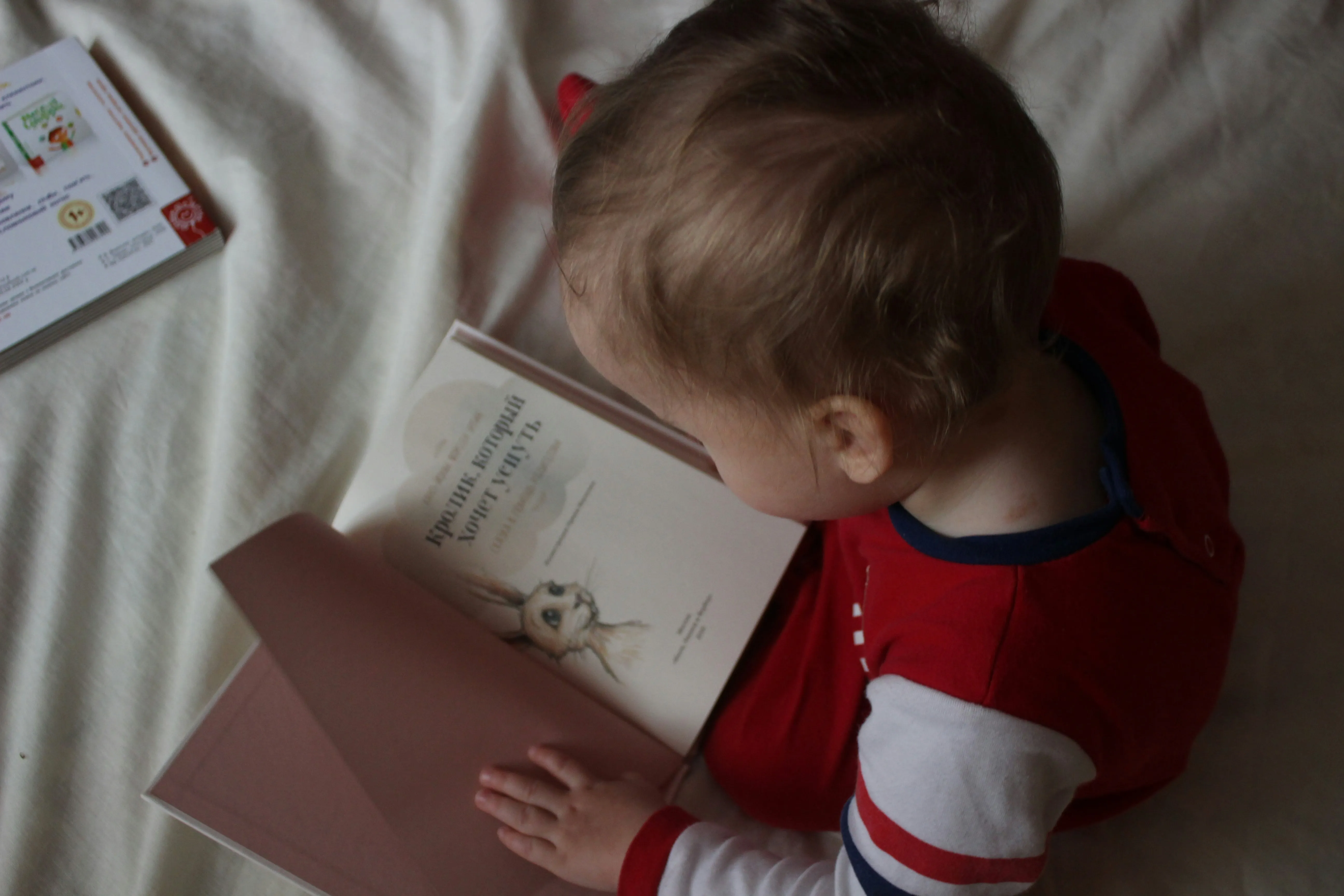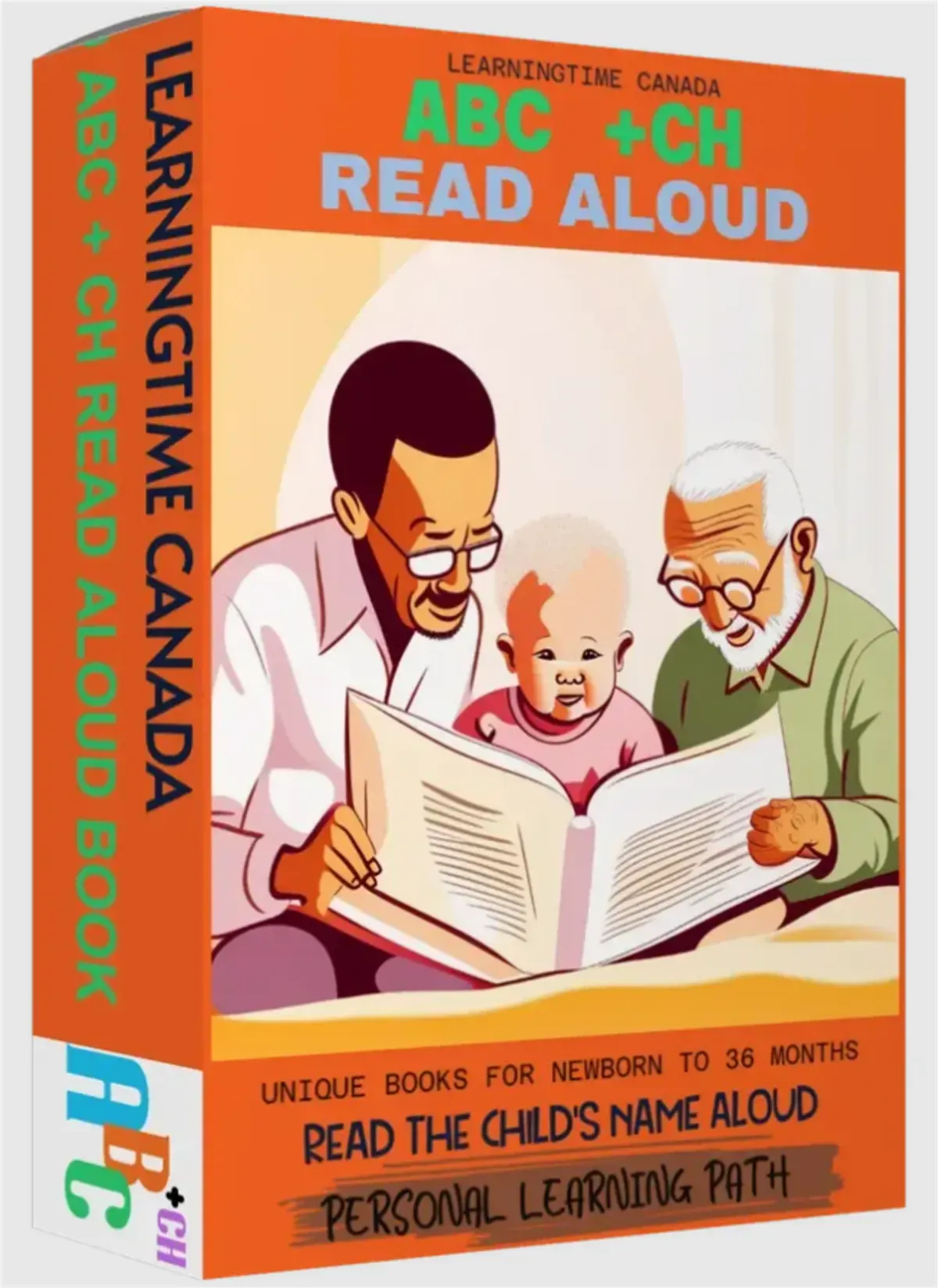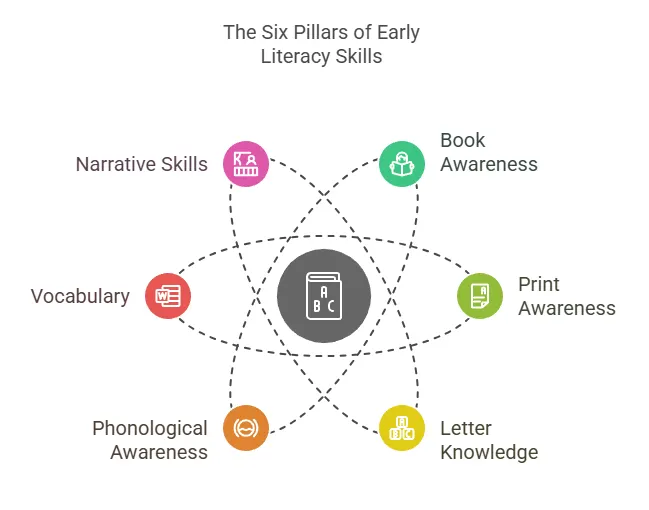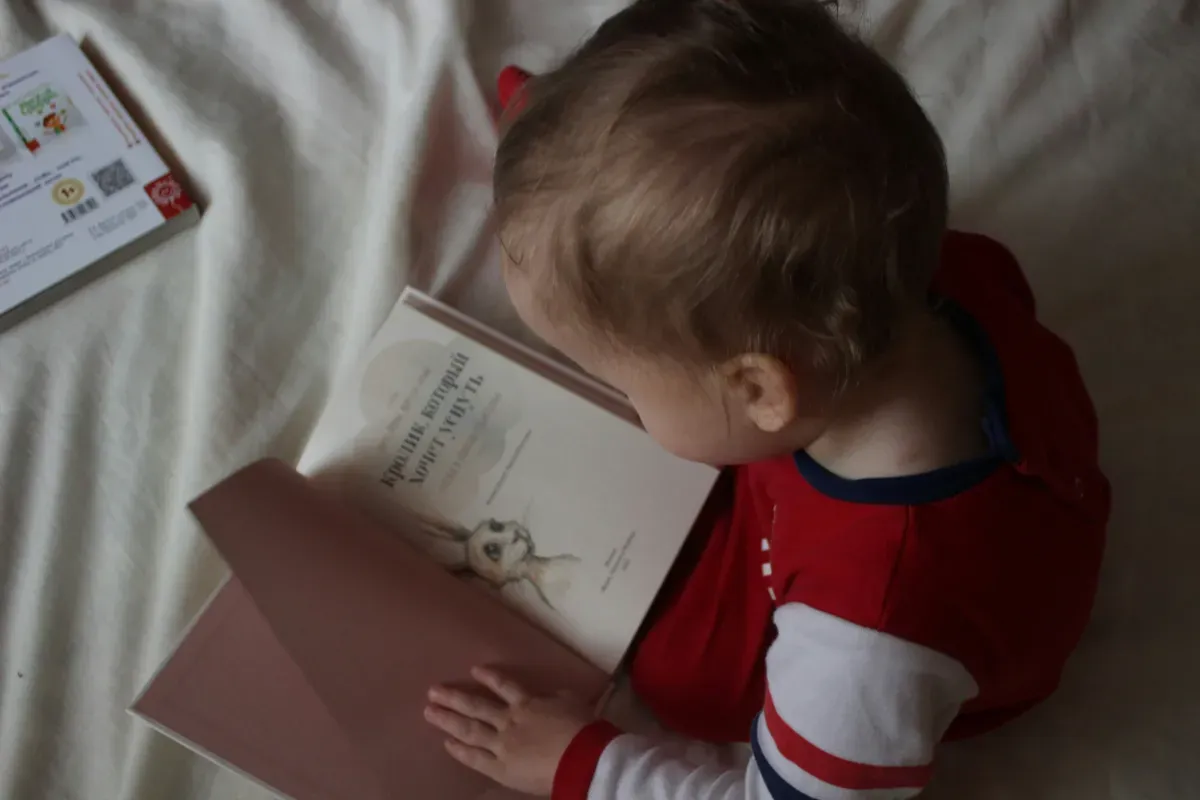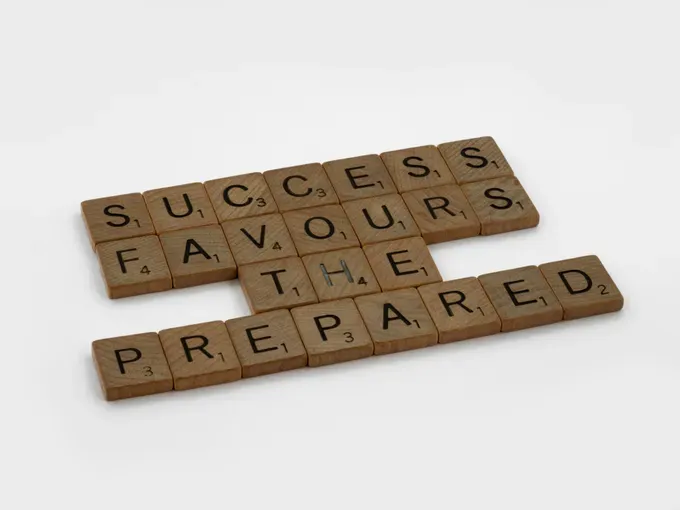Keep Kids Reading: Fluency Boosters for the Summer Break
Boost Reading Fluency: Summer Strategies for Young Readers

Key Highlights
- Dive into actionable ways to enhance reading fluency and comprehension in young readers during the summer break.
- Understand the role of oral reading and repeated fluency practice in building confidence and improving literacy.
- Discover engaging techniques such as partner reading, echo reading, and interactive games that make reading enjoyable.
- Explore methods to select age-appropriate material, including Canadian authors, to match children's reading levels and interests.
- Learn how summer reading prevents the "summer slide" while encouraging consistent practice and independent reading habits.
- Access answers to common questions from parents and obtain resources specific to Canada.
Introduction
Summer is a great time to help kids get better at reading fluency and understanding what they read. When children spend some time on fluency practice, they can feel more sure about themselves, keep up with school work, and see reading as something fun. This guide will show you some ways to help with oral reading and build fluency skills, so kids can get better at reading comprehension. Try out these tips to help young people make strong literacy habits before school starts again.
Understanding Reading Fluency and Its Importance

Reading fluency is the skill of reading words right, at a steady speed, and with real feeling. All of these are needed for good comprehension. When people have fluency, they do not just say the words. They get how punctuation, prosody, and phrasing work. This helps to turn each bit of writing into something that makes sense and tells a story. Reading fluency is the step you need to move from word recognition to understanding the whole meaning.
Fluency practice helps with reading success because it teaches students to read smoothly instead of in a rough way. When kids often practice oral reading, get tips on how to do it better, and build automaticity, they start to link meaning to what they read. Knowing how and when to support fluency can get young readers ready for harder reading as they get older.
What Is Reading Fluency?
To be fluent in reading means more than just knowing the words. It is about reading smoothly and without mistakes, so your child can read with ease and not sound like a robot. This way, they get to really understand the text instead of working hard to sound out each word one by one.
Oral reading is important in getting there. It helps by giving kids a way to listen to a good model of fluent reading, showing them how the words should flow, the way prosody and a good voice sound, and how to use the right expression. When learners hear oral reading with things like correct pacing and active tone, and when they notice punctuation, they take in what reading is supposed to feel like.
Another big part of fluent reading is automaticity. This is when kids can recognize words quickly and without having to stop and think too much. When they build automatic word recognition through repeated reading, decoding gets easier. This lets them focus more on comprehension. Automaticity allows them to feel good and confident as their eyes move over the words and pages, instead of stopping or getting stuck.
The Role of Fluency in Overall Literacy
Reading fluency is the key part that helps children move toward reading on their own. Strong oral reading shows a good mix of accurate word reading and understanding what the text says. Good fluency instruction lets kids get control over how fast they read and the way they use their voices.
If there is no fluency, understanding the text can be hard. When reading is slow and done word by word, the brain can only focus on decoding. This leaves little chance to get what the passage means. With fluency, word recognition and comprehension happen together and smoothly.
Fluency helps children enjoy stories, informational texts, and many new ideas. It helps them love reading for life. By giving attention to fluency instruction, both teachers and parents help kids learn to join in and react to what they read in a real way.
Signs of Strong and Struggling Readers
To tell the difference between fluent readers and those who struggle, you start by looking at how fast they read, how they say the words, and how involved they are with the text. Fluent readers usually read at a good speed and know the words well, which shows in the way they move through each sentence.
Signs of Strong Readers
- They read out loud smoothly and keep a steady pace.
- They say hard words the right way.
- They get into the text and use the right tone and rhythm to make it sound natural.
Signs of Struggling Readers
- They read slowly, do not have much change in their voice, and often trip over words.
- They find it hard to know sight words right away, which makes them pause often.
- They do not use much expression and often read on without stopping at punctuation.
If you notice these signs early, you can give the help that is needed. This can be done with fluency practice and other reading support that focuses on oral reading, word recognition, and working with punctuation and sight words.
Why Focus on Summer Reading for Kids in Canada

Stopping the problem called the "summer slide" is the main goal of summer reading. When kids spend months away from school, they can lose the reading level and comprehension they worked hard to gain.
Regular summer reading can help kids keep and even raise their reading success. It gives them a better chance to hold on to literacy skills with practice. By helping them stay interested during the break, you give your child more vocabulary, self-confidence, and a love for stories. These things are needed for them to do well in school in Canada.
Preventing the “Summer Slide”
The “summer slide” is when children lose some of what they learned in school over the summer if they do not keep up with reading. Reading fluency is often one of the first things they lose when there is less instructional time, and old habits just slip away.
Staying in touch with books can stop this from happening. Doing simple reading tasks over and over or finding stories that are exciting will help kids keep their fluency skills strong and set them up for academic success when the next school year starts.
You can start with small, set reading habits, like reading every night. Doing this over time keeps fluency and comprehension from fading away, setting children up to understand and really enjoy reading before classes begin again.
Benefits of Consistent Practice Over the Break
Regular reading during summer helps children make big steps in fluency skills and literacy. When the kid practices oral reading, they get better at word recognition and start to read faster and more easily. That makes going back to school easier because they are closer to fluent reading. Doing this often also helps with reading comprehension and proper expression, which is so important for academic success in all subjects.
Kids learn even more when they do partner reading or read the same text more than one. They pick up how to use punctuation and intonation. Getting immediate feedback from someone else really helps in improving literacy, building confidence, and understanding how to get better over time.
Encouraging a Lifelong Love of Reading
Creating a place that helps kids love books can lead to reading success. When you bring in many types of books and fun activities, you let young readers explore and be curious. Show them different texts, such as informational texts or made-up stories. This will help grow their vocabulary and help them understand more from what they read.
Partner reading or choral reading can improve their fluency skills. These ways of reading also let them work with others and make reading fun together.
Praise any progress they make, no matter how small. This helps them feel good and want to keep going. All of this will help guide them to become strong readers for life with good fluency and comprehension.
Creating a Fun and Effective Summer Reading Routine

When you build a summer reading routine, it can turn reading into a fun experience for kids. If you use different ways to help them, like partner reading and choral reading, children will be able to read at their reading level and sharpen their fluency skills. If you add a timer for echo reading or plan round robin sessions, you bring a bit of fun into your day. This makes kids want to keep going. Family reading nights and times when you all read together can bring everyone closer.
It helps with working together and developing good comprehension. If you practice fluency in your daily life, reading starts to feel less like hard work and more like a fun adventure.
Setting Realistic Reading Goals
Setting reading goals that you can reach is important for helping a child get better with their fluency skills. When you split big goals into smaller, more manageable steps, learners can stay on track with their progress and feel motivated. For example, you can make a goal to learn a set number of sight words every week or to finish books that match their grade level. Hitting these targets helps children feel good about what they do. This way also helps with word recognition, comprehension, and fluency. Making reading goals helps set up an environment where learners can work on better reading habits all summer long.
Making Reading a Daily Habit
Building a daily reading habit can help people improve better fluency skills and boost their overall literacy. When you put reading into your daily life, you get better at word recognition and at understanding what you read. If you set certain times each day for reading, it helps young readers feel good about books. You can do this by doing partner reading or even reading by yourself. Choral reading lets everyone read together, and this helps make the reading time more fun and brings people closer. When you use goal setting and celebrate any progress made, it gives everyone more motivation. This helps make reading a regular part of life and makes it something you can enjoy for years to come.
Involving Family and Friends in Reading Activities
Getting family and friends involved in reading can help a child a lot with their literacy. When you read together, it helps build fluency skills and understanding. It also makes nice memories. Activities like partner reading or choral reading give good practice and help with proper expression. These activities make reading fun, and people interact creatively. You can invite others to join in round robin reading sessions. This can make a strong group where people help each other, and reading feels like a fun event for everyone. Working together in this way helps build a strong base for academic success and helps kids love reading for life.
Engaging Strategies to Boost Reading Fluency

Having read-aloud sessions can help show a model of fluent reading. These sessions also give quick feedback and help with the pronunciation of words. Sharing this time supports kids as they build their vocabulary. It also helps with using proper expression and the right intonation when reading.
Listening to audiobooks is a fun way for children to work on their fluency skills. It can help kids become better at understanding and using fluent reading. When kids read the same text more than once, they start to read words faster and with less effort. This helps them feel more sure of themselves as they read.
With partner reading or choral reading, kids read out loud together. This lets them get help and means they do not have to read all by themselves. Reading this way makes decoding words less stressful and helps with comprehension. These strategies are good for building automaticity in fluency and can make reading in summer both fun and a big success.
Read-Aloud Sessions and Shared Reading
Read-aloud sessions give a fun way to help learners build strong fluency skills. In these times, you can show proper expression, intonation, and good pronunciation of words. This makes it easier for young readers to learn fluent reading. Shared reading also helps all learners work together and improve comprehension. When a less fluent reader works with a stronger reader, there is a chance for instant feedback and extra help. Using choral reading and echo reading lets everyone join in, which helps them grow word recognition and fluency in a friendly environment.
Exploring Audiobooks and Digital Tools
Trying out audiobooks and using digital tools can really help with a child's reading journey. Audiobooks are great for learners because they encourage fluent reading. Kids get to hear new vocabulary and learn how to say words by listening to good narrators. When children use digital platforms, they find interactive things that help keep them interested, so reading feels like fun and not a job. In this way, kids see words, hear them, and even touch or click, which helps with word recognition and comprehension. This works for kids at different reading levels. Many tools are made for learning and give immediate feedback, like letting you change the speed or highlight words. All these features help to grow a love of reading and make learning new things in vocabulary much easier for kids.
Repeated Reading and Familiar Texts
Practicing repeated reading with texts that you already know can help build fluency skills. When learners read the same story more than once, they become faster at word recognition. This helps their reading comprehension get better. Reading aloud gives you a chance to use proper expression and intonation, so it feels good to read, and you understand more.
If you try choral reading or partner reading, you can get immediate feedback from others. This supports learning vocabulary and working on pronunciation, all while being in a group environment that gives help when you need it. When you read familiar stories, you also get more confident. This confidence lets children move on to harder reading materials over time. It’s a simple and fun way to improve fluency, comprehension, and automaticity.
Choosing the Right Books for Your Child
Choosing the right books for your child helps them grow as a reader. Try to find books that fit what they like. This is one good way to get them interested and make them want to read more. It is also important to pick a book at the right reading level. The book should be just hard enough to help them learn, but not so hard that they feel lost. This makes fluent reading and better comprehension possible.
You can choose Canadian authors, too. These stories can make your child feel closer to what they read, because the stories are familiar or connected to where they live. Offer many kinds of books and topics. When you do this, your child gets to see new words and learn what they mean. Their vocabulary and word recognition get better and better. When you let them pick from many options, your child starts to feel proud, because they see reading as something that is their own.
Matching Books to Your Child’s Interests
Finding books that match what your child likes can help them want to read more. Kids will build their fluency skills and comprehension when they read about things that they enjoy. Give your child choices based on their passions, like dinosaurs, space, or fairy tales. This will help them do more independent reading and learn new vocabulary. Choose books that fit their grade level. This way, the books are not too easy or too hard and will help with automaticity and word recognition. Having a library just for your child will boost their excitement for books. It also sets them up for reading success now and as they get older.
Selecting Books at the Right Difficulty Level
Picking books that match a child's reading level is important for building fluency skills. You want to find books that are not too easy but not too hard. These kinds of books help with word recognition and also with comprehension. Children should be able to read most of the book on their own, with only a little need for decoding help. This balance helps them get better at reading quickly and makes them feel good about it. Using tools that list which books are good for each grade level can keep kids from getting too frustrated. This way, they can have a good time reading and start to love it more. For the best results, mix in explicit phonics instruction with the books you pick.
Canadian Authors and Stories to Explore
Exploring Canadian authors is a great way to help young readers build fluency skills. Today’s writers, like Kenneth Oppel and Francesca Sanna, write stories that connect with children. These stories boost both reading comprehension and how much young readers enjoy books. Classic books by authors like Lucy Maud Montgomery bring stories that last through time. These help with word recognition and pronunciation of words. With their good vocabulary and interesting plots, these books help kids with fluent reading and let them feel a sense of who they are. All of this makes these books a helpful tool for summer literacy fun.
Playful Approaches to Encourage Reading
Adding games and fun activities to reading can help turn what is usually a boring task into a much more interesting time. When you use things like reader’s theatre or role play, you help people work on their fluency skills. These ideas also help with proper expression and good intonation. The creative arts mixed with stories can make a place feel lively and better for everyone to explore new things. If you use repetition, such as echo reading or choral reading, you help make reading go smoother because of automaticity, and everyone can pick up new vocabulary words. This fun way of learning is good for all learners, no matter where they start. It also helps them get better comprehension, and makes people want to keep being part of a literacy journey for a long time, not just in summer.
Incorporating Reading into Games and Activities
Getting young readers interested by using games can really make their reading better. When you add things like word bingo or scavenger hunts, you make reading fun and helpful at the same time. Kids can get better at word recognition without feeling like fluency practice is hard work.
Also, doing puppet shows or trying story-building games is great for helping kids with comprehension and listening. If you use these interactive ways, children will get stronger in their fluency skills. They will also begin to love reading, which can last for their entire lives. This focus on fluency, comprehension, and literacy can help them learn in a new and enjoyable way.
Using Reader’s Theatre and Role Play
Getting involved in reader’s theatre and role play can make reading fun and interactive for learners. These methods help improve fluency skills because kids get to show character feelings using intonation and proper expression. This makes it easier for them to have better comprehension of a text. As children act out different roles, they feel a part of the story. This helps with word recognition and helps grow their vocabulary.
Doing theatre activities like these lets learners work together as a team, which helps build their social skills, too. When you use these ways of learning, reading becomes more of an adventure. The students get the chance to enjoy books even more while they work on their fluency, comprehension, and get closer to real reading success.
Creative Arts and Storytelling Projects
Getting involved with creative arts can help boost reading fluency and make learning more fun. When you draw pictures for stories or make character puppets, you get to use your hands and imagination. These activities help learners show what they understand from a story, and this helps improve their reading comprehension and fluency skills. When you add theatre in the mix, like doing role play or drama, you practice speaking with proper expression and intonation while reading out loud. When you use your hands and join in, you work on word recognition and build a better link to the story. This can also make people more excited about reading and learning in general.
Related Articles :
Learning to Read for Kids: Tips and Tricks
Understanding Your Child's Learning Style: Tips for Parents
Mother's Day for Grandma: Personalized Stories for Learning
Conclusion
Having a regular summer reading routine helps build lifelong literacy and leads to academic success. When kids keep up their reading during the break, they get better at fluency skills and reading comprehension. Using fun ways to read, like partner reading or choral reading, and letting them check out different books, will help kids enjoy reading. With the right support and a good space at home, every child can become a fluent reader. They will be able to read at any grade level and feel sure of themselves. This way, they grow both their fluency and comprehension, and they get a love for books that can last for years.
Frequently Asked Questions
How much should my child read each day during summer?
Try to read for 20-30 minutes each day during summer. You can change this time based on what your child likes and how long they can focus. Reading often helps your child keep and build their skills. It also stops them from losing what they learned before. To keep things exciting, use different types of reading. Mix up the genres and materials so your child stays interested in the reading time.
What if my child resists reading at home?
If your child does not want to read at home, try to make it more fun. Bring in things they like. You can use games or tell stories together. Get other family members to join in, too. This helps your child feel supported. It makes them want to find out more and enjoy books.
Are audiobooks as effective as traditional reading?
Audiobooks can be just as helpful as reading a book in the old way. They help with fluency and help you understand the story better. You can listen to the story while also looking at the words. This way, your mind uses both seeing and hearing, which helps you stay interested and understand more. So, adding audiobooks to your reading time can be a good way to get more out of it.
How do I know if a book is at the right level for my child?
To see if a book is good for your child, think about what they like, how well they read, and how much they understand. Pick books that let them learn more, but do not make them upset. Check the book’s vocabulary and sentence structure so you know it fits what they can do. This way, the book will help with their comprehension and also be fun for them to read.
What resources are available for parents in Canada?
Parents in Canada have access to many resources that help with their child's reading journey. There are public libraries with summer reading programs. Local literacy groups have workshops you can join. You can also use online platforms that share book lists made for kids. These resources give children the support they need to build reading skills and a love for literacy and books.

Written with Augmented Intelligence and SHiNER The Human
























